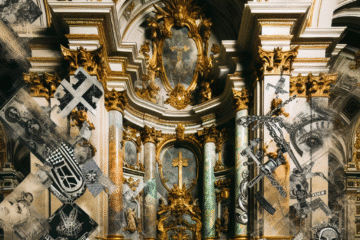
Image title: Hermann von Wedigh III (died 1560)
Medium: Oil and gold on oak
Date: 1532
Source:
The Met Collection
“
I don’t look to jump over 7-foot bars; I look around for 1-foot bars that I can step over.
”
— Warren Buffett
The Studio Inside the Prison: Creative Uprising Behind Bars
Introduction: Where Art and Confinement Collide
What happens when creativity confronts captivity? Throughout history, prisons have not just been places of punishment—they’ve also been crucibles of extraordinary artistic expression. From sketches on cell walls to entire exhibitions conceived within high-security facilities, the story of prison art reveals the indomitable human spirit. This blog explores how visual art, created behind bars, has evolved across time, influenced by shifting philosophies of justice, technological access, and humanity’s irrepressible need to create.
1. The Ancients: Early Echoes of Art in Captivity
The first prison artworks may trace back to antiquity, when prisoners of war sketched into stone walls or crafted artisan goods as forced labor. The Roman Empire, for example, used prisoner artisans during construction and decoration projects. While these pieces were seldom signed or celebrated, they reveal how even the incarcerated contributed to cultural aesthetics. In medieval Europe, monks who were imprisoned for heresy sometimes copied manuscripts or composed illuminated texts in their isolation—a defiant act of spiritual resistance dressed in golden leaf and calligraphy.
2. The Revolutionary Age: Political Prisoners and the Symbolism of Art
In the 18th and 19th centuries, as prisons became ideological battlegrounds, art evolved into a form of political commentary. Figures like the Marquis de Sade wrote and illustrated while jailed in the Bastille. Similarly, revolutionaries and dissidents from Russia to South America utilized drawing and writing as tools of resistance. The idea of the “prison artist” became entwined with conceptions of martyrdom and intellectual rebellion. Art in this era reflected themes of injustice, freedom, and personal transformation.
3. The 20th Century: Institutions, Rehabilitation, and the Rise of Prison Art Programs
By the mid-20th century, prison art moved from hidden labor to formal recognition. As rehabilitation became a purpose of incarceration—especially in Western democracies—institutions slowly introduced creative programs. In the U.S., postwar prison art classes sprung up in places like San Quentin and Folsom. Perhaps most famously, artist Johnny Cash’s 1968 concert at Folsom Prison symbolized a cultural marriage between the incarcerated and artistic expression. Art produced in these spaces ranged from prison tattoos to watercolor portraits on commissary paper, often portraying longing, memory, and redemption.
4. Late 20th to 21st Century: Outsider Art Meets the Gallery Wall
As interest in “outsider art” grew—art made outside traditional institutions—the work of incarcerated artists began reaching a larger, often international audience. Art shows curated from prison collections popped up in galleries, explored by critics, and integrated into academic discourse. This period saw greater intersection between visual art and social justice advocacy. Projects like the Prison Arts Coalition and initiatives within Europe and Latin America gave artists behind bars platforms to express systemic critiques, personal trauma, and surrealist introspection, revealing prison as both a location and a metaphor for human constraint.
5. The Digital Age: Art Behind Bars in the Technological Era
While imprisonment often limits access to digital tools, the 21st century has nonetheless cracked open new doors. Inmates now send physical art pieces to be digitized for online exhibitions. Virtual galleries showcase works to a global audience, while nonprofits provide incarcerated artists with themes, contests, and collaborative projects. Technologies such as 3D printing and VR still remain largely out of reach, but prison creatives are pioneering new methods with old tools—crafting avant-garde pieces using recycled materials or homemade pigments. The prison cell becomes not a tomb of creativity, but a crucible for invention and resilience.
Conclusion: Painting Beyond the Bars
The prison studio is an act of defiance, an assertion that identity transcends bars and barbed wire. Art made in these spaces compels us to reconsider assumptions about justice, humanity, and the transformative power of creative thought. From ancient chisels to watercolor on cardboard, from revolutionary sketches to digitized portraits, the saga of incarcerated art is a testament to the fact that creation doesn’t cease—no matter the limits on liberty.
The legacy of prison artists continues to challenge and enrich the wider cultural landscape, urging us toward empathy and greater understanding. Their works are reminders that, despite the harshness of confinement, the human need to express—to be seen, to be heard—remains unshackled.

Image description:
The Portraits gallery of the Art Against the Odds: Wisconsin Prison Art Exhibition at the Milwaukee Institute of Art & Design in Milwaukee, Wisconsin (United States).
License:
CC BY-SA 4.0
Source:
Wikimedia Commons
Useful links:


